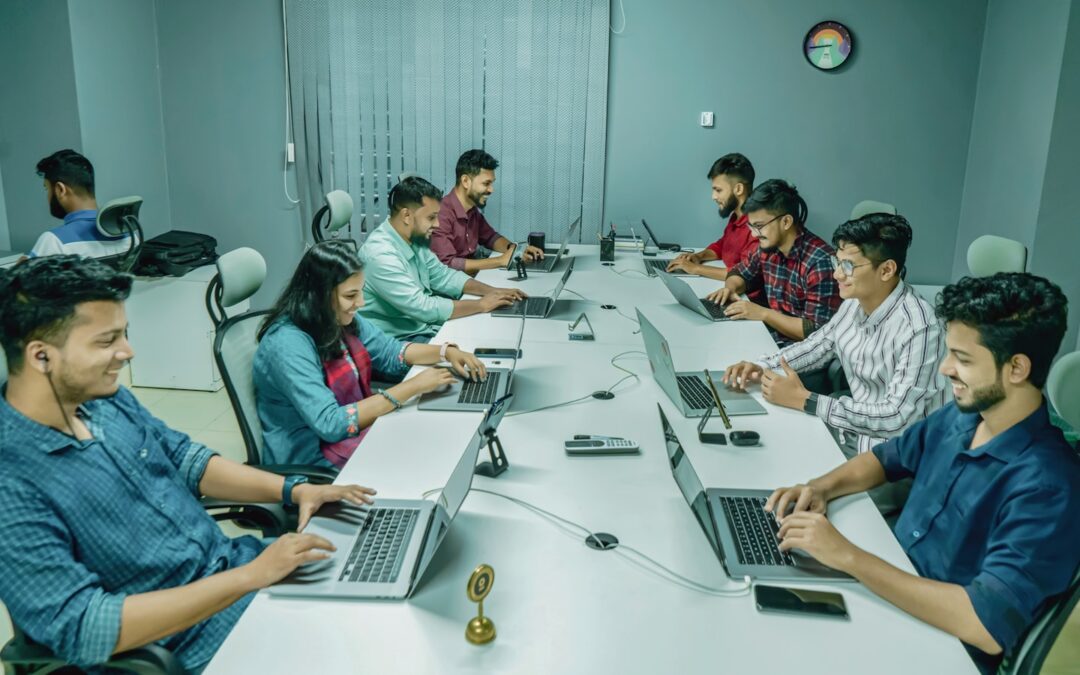The Critical Need for Expansion and Integration in IoT System Design
Ensuring Future-Readiness in IoT Deployments
When designing IoT systems for expansion and integration, it is essential to consider the potential for future growth and the incorporation of new technologies. In rapidly advancing regions such as Saudi Arabia and the UAE, cities like Riyadh and Dubai are continuously adopting cutting-edge technologies to enhance their infrastructure and services. Ensuring that IoT systems can adapt to these changes is crucial for maintaining their relevance and effectiveness. This foresight enables businesses and municipalities to leverage new opportunities and avoid costly overhauls.
Future-readiness in IoT systems involves designing with scalability in mind. This means selecting hardware and software components that can support additional devices and increased data traffic without compromising performance. For example, a smart city project in Riyadh might start with basic traffic monitoring but should be designed to integrate future enhancements such as autonomous vehicle management and advanced analytics. By anticipating these needs, system designers can ensure that the infrastructure is robust enough to handle future demands.
Moreover, considering expansion during the initial design phase allows for more strategic planning and resource allocation. It enables organizations to prioritize investments and avoid the pitfalls of piecemeal upgrades, which can lead to inefficiencies and higher costs. This strategic approach is particularly beneficial in the dynamic business environments of the UAE and Saudi Arabia, where rapid growth and technological innovation are constants.
Facilitating Seamless Integration with Emerging Technologies
Another critical aspect of designing IoT systems for expansion and integration is ensuring seamless compatibility with emerging technologies. As artificial intelligence (AI), blockchain, and the metaverse become integral to various industries, IoT systems must be capable of integrating these advancements to enhance functionality and user experience. For instance, integrating AI with IoT can enable predictive maintenance in manufacturing, while blockchain can enhance data security and transparency in supply chain management.
In Dubai, businesses are increasingly exploring the potential of combining IoT with generative AI to drive innovation and efficiency. This integration requires IoT systems to have flexible and open architectures that support the incorporation of new technologies. Designing IoT systems with modular components and standardized interfaces can facilitate this process, ensuring that new technologies can be integrated without significant disruptions.
Additionally, the ability to integrate emerging technologies can provide a competitive edge. Businesses that can quickly adopt and leverage new technologies are better positioned to innovate and respond to market changes. This agility is essential for maintaining leadership and achieving long-term success in technology-driven markets such as Saudi Arabia and the UAE.
Enhancing System Longevity and Investment Protection
Considering the potential for expansion and integration when designing IoT systems also enhances system longevity and protects investments. IoT systems represent significant investments in both hardware and software, and designing for future adaptability ensures that these investments remain valuable over time. Systems that can evolve with technological advancements are less likely to become obsolete, providing a higher return on investment.
In Saudi Arabia, where substantial investments are being made in smart city initiatives, designing for longevity is particularly important. Ensuring that IoT systems can integrate new technologies and scale with growing urban populations can help these projects remain effective and relevant for years to come. This approach not only maximizes the value of the initial investment but also reduces the need for frequent and costly upgrades.
Furthermore, designing for expansion and integration helps mitigate risks associated with rapid technological change. As new technologies emerge, organizations that have flexible and adaptable IoT systems can incorporate these advancements without significant downtime or operational disruptions. This resilience is crucial for maintaining continuity and efficiency in fast-paced environments like Dubai’s business sectors.
Best Practices for Designing IoT Systems with Expansion and Integration in Mind
Adopting a Modular and Flexible Architecture
One of the best practices for designing IoT systems for expansion and integration is adopting a modular and flexible architecture. Modular design allows different components of the system to be developed, tested, and upgraded independently. This flexibility is essential for incorporating new technologies and scaling the system to meet future demands. For example, a smart agriculture project in the UAE might start with basic soil moisture sensors but should be designed to integrate advanced AI analytics and automated irrigation controls as these technologies become available.
Using standardized interfaces and communication protocols is also crucial. These standards ensure that new components can be seamlessly integrated into the existing system, facilitating interoperability and reducing integration complexity. In Riyadh’s industrial sectors, adopting standards like MQTT (Message Queuing Telemetry Transport) and OPC UA (Open Platform Communications Unified Architecture) can simplify the integration of diverse IoT devices and systems.
Prioritizing Security and Data Privacy
Security and data privacy are paramount when designing IoT systems for expansion and integration. As systems grow and incorporate new technologies, the potential attack surface expands, increasing the risk of cyber threats. Ensuring robust security measures from the outset can help protect sensitive data and maintain system integrity. This includes implementing encryption, secure authentication, and regular security audits.
In Dubai, where smart technology is integral to urban development, ensuring data privacy and security is critical for public trust and regulatory compliance. Designing IoT systems with these considerations in mind helps mitigate risks and ensures that expansions and integrations do not compromise security. Regularly updating security protocols and staying informed about emerging threats are also essential practices.
Engaging in Continuous Improvement and Collaboration
Engaging in continuous improvement and fostering collaboration are key strategies for maintaining the relevance and effectiveness of IoT systems. Continuous improvement involves regularly assessing system performance, incorporating user feedback, and staying updated with technological advancements. This proactive approach ensures that IoT systems evolve to meet changing needs and leverage new opportunities.
Collaboration with technology partners, industry experts, and stakeholders is also crucial. In the UAE and Saudi Arabia, where technological ecosystems are rapidly evolving, collaboration can provide valuable insights and resources for designing adaptable IoT systems. Executive coaching services can support business leaders in fostering a culture of innovation and continuous improvement, ensuring that their organizations remain agile and responsive.
Conclusion
The design of IoT systems for expansion and integration is critical for ensuring long-term success and relevance in the face of rapid technological advancements. By adopting modular and flexible architectures, prioritizing security, and engaging in continuous improvement, businesses and municipalities in Saudi Arabia, the UAE, and beyond can develop IoT systems that are robust, adaptable, and future-proof. As smart technology continues to advance, these practices will be essential for leveraging the full potential of IoT and driving sustainable growth and innovation.
—
#IoTSystemDesign #ExpansionPotential #TechnologyIntegration #SaudiArabia #UAE #Riyadh #Dubai #ArtificialIntelligence #Blockchain #TheMetaverse #ExecutiveCoaching #GenerativeAI #ModernTechnology #BusinessSuccess #LeadershipSkills #ProjectManagement













